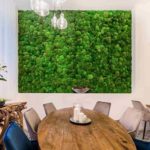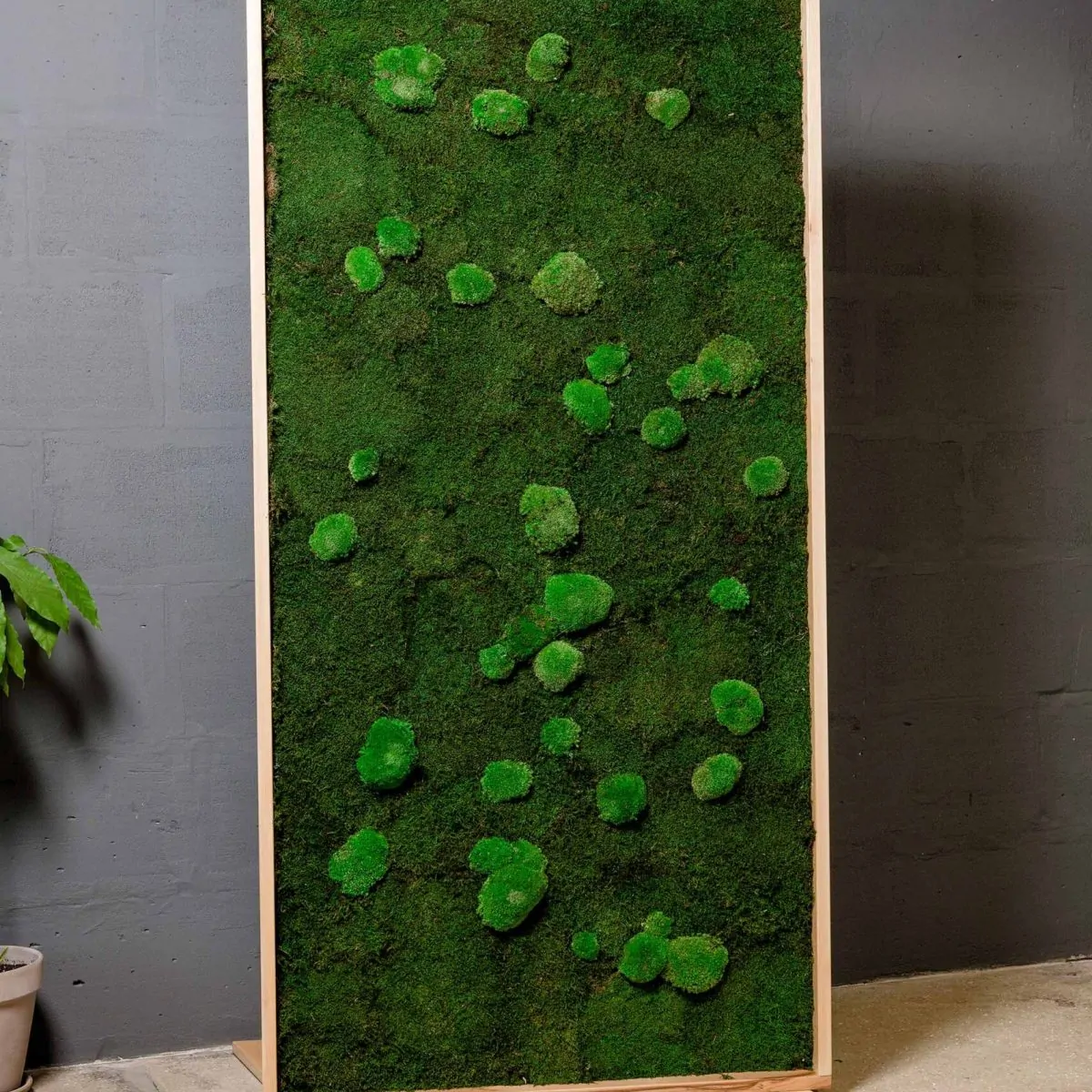
The sunrise motif of the headboard featured in this chapter is a popular design, particularly in American Gauntry furniture. Whatever design you choose, however, the primary challenge in making the end boards for a bed is cutting the pieces symmetrically. The boards are too unwieldy to do the job accurately on the band saw. You will be much better off shaping the boards with a router guided by templates, as shown starting on page 61.
When the time comes to glue the end boards and rails to the bedposts (page 64), try to enlist the aid of an assistant or two to help you maneuver the stock and the six long bar clamps you will need. For maximum flexibility at glue-up, use white glue rather than yellow adhesive;
it takes longer to set, allowing more time for adjustment after it has been applied.
Join the side rails to the posts with commercial bayonet brackets (page 63) or bed bolts (photo, right). Bed bolts are stronger, but the brackets are simpler to install and come apart with only a few mallet taps.
To facilitate disassembly, bedposts are usually attached to the side rails with knockdown hardware, such as the bed bolt shown at right. The bolt extends through the post into the rail and is threaded into a cross dowel installed in the rail. The bolt head is concealed by an embossed brass cover.


You can cut the tenon cheeks in the end boards and rails with a router or a radial arm saw. If you do the job on a table saw, as shown here, you will need to set up an auxiliary table or work with a helper to keep the long workpieces steady as you feed them across the table. Start by installing a dado head on the saw, adjusting it to its widest setting. Attach a high auxiliary fence and an extension board to the miter gauge. Hold a carpenter’s square against the fence and extension to ensure that they are perpendicular to each other and adjust the miter gauge, if necessary (above, left). Set the cutting height at about / inch and make a cut across each face of a scrap board
as thick as the end boards and rails. Test-fit the tenon in one of the post mortises, raising the dado head and making additional cuts, as necessary, until the fit is snug. Once the blade height is set, position the fence for a Ш-inch-wide cut and clamp a featherboard to the fence above the dado head. Holding the workpiece flush against the fence and miter gauge extension, and flat on the table, feed it into the blades to define the tenon shoulder. Then shift the stock away from the fence by the width of the kerf and make another pass to clear the remaining waste. Turn the workpiece over to cut the cheek on the other side (above, right).
2 Marking the edges of the tenons
 Once all the tenon cheeks have been cut, mark the tenons’ edges, using their post mortises as a guide. Outline single tenons on the end rails and footboard; the headboard, shown at right, has two tenons. Set the post on a work surface with its mortises facing up and position the mating piece on top, aligning the end of the board with the mortises. Then line up the blade of a combination square with one end of a mortise and, holding the handle of the square against the end of the tenon and the tip of the blade against the shoulder, mark the tenon edge across the cheek with a pencil. Outline the remaining tenon edges the same way (right), marking the waste with Xs as you go.
Once all the tenon cheeks have been cut, mark the tenons’ edges, using their post mortises as a guide. Outline single tenons on the end rails and footboard; the headboard, shown at right, has two tenons. Set the post on a work surface with its mortises facing up and position the mating piece on top, aligning the end of the board with the mortises. Then line up the blade of a combination square with one end of a mortise and, holding the handle of the square against the end of the tenon and the tip of the blade against the shoulder, mark the tenon edge across the cheek with a pencil. Outline the remaining tenon edges the same way (right), marking the waste with Xs as you go.

![]()
Clear the waste adjoining the edges of the tenons using a router fitted with a bottom-piloted flush-trimming bit. Clamp the stock to a work surface and align the cutter with the edge of a tenon. Then butt a stop block against the router base plate and clamp it to the workpiece. If there is a second tenon on the same end of the stock, as in the headboard, clamp a second stop block to prevent the router from cutting into the tenon.
With the tool’s base plate flat on the workpiece and flush against the stop block, ease the bit into the stock until the pilot bearing reaches the tenon shoulder. Feed the router along the end of the board, stopping when the base plate contacts a second stop block (inset) or the bit reaches the edge of the workpiece (above). Clean up the edges of the tenon with a chisel.
1 Making the end board templates
 Shape the curved profiles of the head – and footboards with a router guided by templates. Make the templates from %-inch plywood, tracing the contours of the boards’ top edges, as illustrated on page 51, on the plywood. But instead of producing templates that span the full end boards, mark only one-half the patterns on the templates, from one end to the middle; not only will the templates be easier to maneuver, but by using a single pattern to outline both halves of each board, you will ensure that they are symmetrical. Cut each pattern one-half as long as the end board, plus about 12 inches. On both sides of the template, mark one end of the end board, then the middle, and trace the curved pattern in between. Cut the pattern on your band saw, then smooth the cut edge, using a spindle sander (right) or a sanding block.
Shape the curved profiles of the head – and footboards with a router guided by templates. Make the templates from %-inch plywood, tracing the contours of the boards’ top edges, as illustrated on page 51, on the plywood. But instead of producing templates that span the full end boards, mark only one-half the patterns on the templates, from one end to the middle; not only will the templates be easier to maneuver, but by using a single pattern to outline both halves of each board, you will ensure that they are symmetrical. Cut each pattern one-half as long as the end board, plus about 12 inches. On both sides of the template, mark one end of the end board, then the middle, and trace the curved pattern in between. Cut the pattern on your band saw, then smooth the cut edge, using a spindle sander (right) or a sanding block.
|
2 |
 Marking the end board stock
Marking the end board stock
Set the stock face-up on a work surface and mark the middle on the top edge. Then clamp the template on top, aligning the end mark with the end of the workpiece and the two middle marks. Run a pencil along the cut edge of the template to outline the pattern on the end board stock (left). Then turn the template over and repeat the process to mark the other half of the workpiece.
 3 Shaping the end boards
3 Shaping the end boards
![]()
![]() Cut the end boards on your band saw, leaving about Vs inch of waste along the cutting lines. Reclamp the workpiece and template to a work surface as in step 2, ensuring that the edge to be shaped extends off the table by a few inches. Install a top-piloted flush-trimming bit in your router, adjusting the cutting depth so the pilot bearing will be level with the template and the cutter will trim the entire edge of the stock. Starting at one end of the board, hold the router flat on the template and ease the bit into the stock until the bearing contacts the pattern. Then feed the tool steadily along the edge, moving against the direction of bit rotation and pressing the bearing against the template (right). Once you reach the end of the template, stop the cut. Turn the template over and clamp it to the other half of the end board, then repeat the trimming process. Smooth the edges of the stock with 120-grit sandpaper.
Cut the end boards on your band saw, leaving about Vs inch of waste along the cutting lines. Reclamp the workpiece and template to a work surface as in step 2, ensuring that the edge to be shaped extends off the table by a few inches. Install a top-piloted flush-trimming bit in your router, adjusting the cutting depth so the pilot bearing will be level with the template and the cutter will trim the entire edge of the stock. Starting at one end of the board, hold the router flat on the template and ease the bit into the stock until the bearing contacts the pattern. Then feed the tool steadily along the edge, moving against the direction of bit rotation and pressing the bearing against the template (right). Once you reach the end of the template, stop the cut. Turn the template over and clamp it to the other half of the end board, then repeat the trimming process. Smooth the edges of the stock with 120-grit sandpaper.

Fastening hook plates to the rails
If you are using bayonet brackets to attach the side rails to the posts, start by fixing a hook plate to the ends of the rails. Clamp a rail to a work surface, center a plate on the end, and outline it with a pencil. Then chisel a mortise within the outline to a depth equal to the plate thickness. Once the plate is flush
with the end of the rail, hold it in position and tap it with a mallet to mark the base of the hooks on the wood. Hold the chisel perpendicular to the end grain of the rail and cut recesses for the hooks (above). Then screw the plate to the rail, making sure that the hooks will be pointing down.
2 Fastening catch plates to the posts


 |
The placement of the catch plates on the bedposts determines the height of the mattress; the bottom of the box spring is customarily 8V2 inches above the floor. It is also crucial to locate the plates so the inside faces of the rails hug the edges of the box spring; for a 60-inch-wide box spring/mattress set in a bed of the dimensions provided on page 50, centre the plate on the edge of the post. Mark the edges of the rail on the post and outline the catch plate on the post (right), centering it between rail marks. Chisel the plate mortise as you did in step 2, then hold the hardware in position and outline the hook openings on the stock. Use a chisel and mallet to cut recesses in the post for the hooks, then screw the catch plate to the post.

![]()
 |
 2 Gluing the posts to the end boards
2 Gluing the posts to the end boards
Set the end boards with their respective end rails and posts on a work surface, and test-fit the mortise-and-tenon joints between them. Use a chisel to pare away wood from any ill-fitting joints. Apply glue to the contacting surfaces of the posts and end boards and rails, and use a nonmarring dead-blow hammer to tap the joints together, if necessary. Secure the pieces with four long pipe clamps or eight shorter bar clamps used in pairs, as shown at left. Position two clamps across the end board so the handle-end jaws rest against opposite posts and the tail stops of the clamps overlap. Protect the posts with wood pads cut as long and wide as the pommel sections; use plywood pads to protect the faces of the end boards and rails. Tighten one of the clamps until the tail stops make contact. Repeat with two more clamps across the end rail and partially tighten all four clamps, then turn the assembly over and install the remaining four clamps. Tighten all the clamps (left) until a thin glue bead squeezes out of the joints.
|
2 |
![]()
 |
Installing the testers
 Bore a hole through the center of each half-lap at the end of the testers, using your drill press fitted with a bit the same diameter as the finial tenons—% inch. To prevent tearout, bore the holes in two steps: Start by drilling halfway through the stock, then turn the tester over and complete the hole from the other side. (You can also assemble the testers and drill the two holes at the same time with a portable drill. This will ensure that the holes line up perfectly.) Install the testers at one corner of the bed at a time. Slip the finial tenon through the hole in the end tester and, holding the side tester over the bedpost (left), fit the tenon through its hole into the mortise in the post.
Bore a hole through the center of each half-lap at the end of the testers, using your drill press fitted with a bit the same diameter as the finial tenons—% inch. To prevent tearout, bore the holes in two steps: Start by drilling halfway through the stock, then turn the tester over and complete the hole from the other side. (You can also assemble the testers and drill the two holes at the same time with a portable drill. This will ensure that the holes line up perfectly.) Install the testers at one corner of the bed at a time. Slip the finial tenon through the hole in the end tester and, holding the side tester over the bedpost (left), fit the tenon through its hole into the mortise in the post.

The tapered octagonal bedpost, known as a pencil post, is a popular alternative to the turned version featured in the previous section. Instead of being shaped in individual sections that are then assembled, pencil posts are made from a single length of solid or face – glued lumber—first tapered on a jointer (page 67) and then by hand (page 68). To avoid tearout as you shape the posts, make your blanks from 3/2-inch-thick stock with straight grain; if you choose to glue up thinner boards to make up the blanks, make sure the wood grain of the pieces runs in the same direction.
Shaping the octagonal sections of the posts is a challenge of design and



